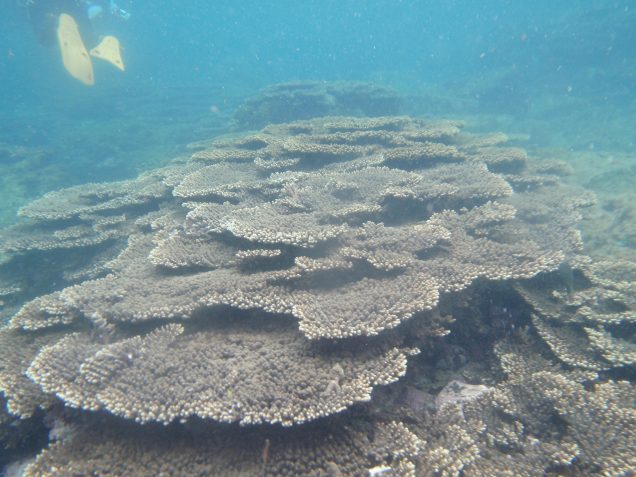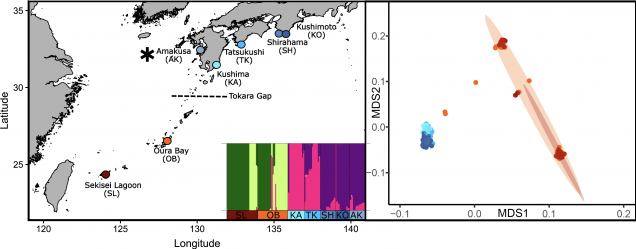Coral Range Expansion
One of the ways in which corals can respond to warming oceans is to increase their ranges to higher latitudes. We are examining the population genomic patterns of Acropora hyacinthus at their range edge surrounding mainland Japan and nearby populations in the subtropical Ryukyus islands. A distinct temperature gradient exists between these two regions; minimum weekly winter sea surface temperature (SST) doesn’t go below 18° C (lower thermal limit for coral reef establishment) in the subtropics, but range edge populations experience lower temperatures. Waters in this region have been warming at ~0.5°C per decade, which has caused macroalgal-to-coral shifts. Several sites at high latitudes that had no coral colonies 40 years ago are now dominated by Acropora hyacinthus offering a unique opportunity to investigate coral range expansion.

This project is being led by PhD candidate James Fifer. In collaboration with the Yasuda Lab at Miyazaki University, we have collected A. hyacinthus at several sites in this region, including one of the recently expanded sites (Amakusa). We use 2bRAD-seq to target a subset of the genome, which provides us with single nucleotide polymorphisms (SNPs) that can be used to explore population structure, demographic history, signatures of selection and basic population genetic statistics.
We are investigating the following:
1) Presence of cryptic species and their delineation between temperate and subtropical environments
2) Population structure within the temperate region and possible adaptation to local climates
3) The genomic signature of range edge and recently expanded populations in corals
